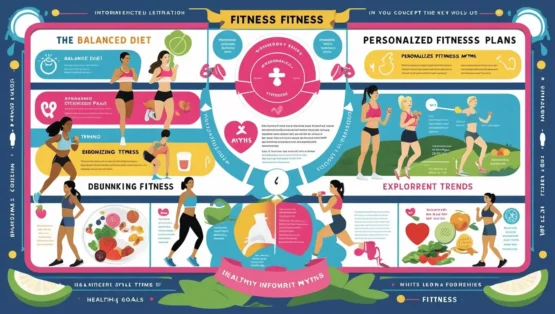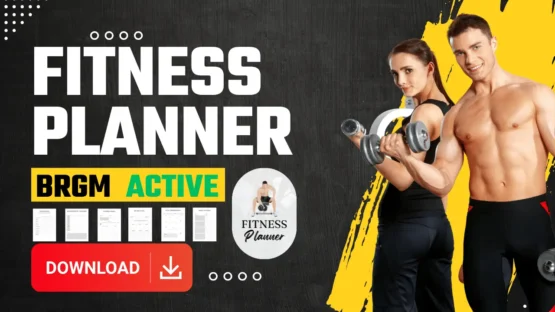- You have no items in your shopping cart
- Continue Shopping

Home exercise schedule for women to lose weight
Are you tired of feeling stuck in your weight loss journey? Creating a home workout routine can be a game-changer. With a structured fitness plan, women can achieve their weight loss goals from the comfort of their own homes.
A well-designed women’s fitness routine can help you burn calories, build strength, and boost your metabolism. By incorporating a weight loss exercise plan into your daily routine, you can take the first step towards a healthier, happier you.

Table of Contents
Key Takeaways
- A home workout routine can be tailored to individual weight loss goals.
- A structured fitness plan helps women achieve their weight loss objectives.
- Incorporating a weight loss exercise plan can boost metabolism and burn calories.
- A well-designed women’s fitness routine can help build strength and confidence.
- Creating a home workout routine can be a convenient and effective way to lose weight.
Understanding Weight Loss Fundamentals for Women
For women aiming to lose weight, comprehending the fundamental aspects of weight loss is essential for a successful outcome. Weight loss is not just about cutting calories or exercising more; it’s about understanding how the body works and how to create a sustainable weight loss plan.
The Science Behind Female Weight Loss
Female weight loss is influenced by a complex interplay of hormones, metabolism, and lifestyle factors. Understanding these elements can help women tailor their weight loss strategies for better results.
Hormonal Influences on Fat Storage
Hormones such as estrogen and progesterone play significant roles in fat distribution and storage in women. Changes in these hormone levels during different life stages can affect weight loss efforts.
Metabolic Differences Between Men and Women
Men and women have different metabolic rates and fat storage patterns. Women generally have a slower metabolism than men, which can impact their weight loss journey.
Calories In vs. Calories Out: What Women Need to Know
The principle of calories in vs. calories out is fundamental to weight loss. To lose weight, women need to consume fewer calories than they burn.
Creating a Sustainable Caloric Deficit
A sustainable caloric deficit can be achieved through a combination of diet, exercise, and lifestyle changes. It’s not just about drastically cutting calories but making healthy, maintainable changes.
The Role of Exercise in Energy Balance
Exercise plays a crucial role in energy balance by increasing the number of calories burned. Regular physical activity not only aids in weight loss but also improves overall health.
| Activity | Calories Burned per Hour |
|---|---|
| Running (6 mph) | 600 |
| Swimming (leisurely) | 420 |
| Cycling (10 mph) | 400 |
By understanding the science behind weight loss and implementing a balanced diet and regular exercise, women can achieve their weight loss goals and maintain a healthy lifestyle.
Setting Realistic Weight Loss Goals
Embarking on a weight loss journey begins with setting goals that are both realistic and achievable. Understanding your objectives is crucial to creating an effective fitness schedule for weight loss.
Determining Your Ideal Weight Range
To establish a realistic goal, you first need to determine your ideal weight range. This can be done by considering factors such as age, height, body composition, and health status. A healthy weight range is typically defined by a Body Mass Index (BMI) between 18.5 and 24.9.
Creating SMART Fitness Objectives
Creating SMART (Specific, Measurable, Achievable, Relevant, Time-bound) fitness objectives is key to a successful workout plan for women. For example, instead of saying “I want to lose weight,” a SMART goal would be “I will lose 10 pounds in the next 3 months by exercising for 30 minutes, 3 times a week.”
Tracking Your Progress Effectively
Tracking your progress is vital to staying motivated and adjusting your effective exercises to lose weight. Use a fitness journal or mobile app to log your workouts, weight, and measurements. Regularly reviewing your progress helps in making necessary adjustments to your fitness schedule.
| Goal Setting Component | Description | Example |
|---|---|---|
| Specific | Clearly define your goal | Losing 10 pounds |
| Measurable | Quantify your goal | 10 pounds in 3 months |
| Achievable | Ensure the goal is realistic | Based on current weight and health |
| Relevant | Align with overall fitness goals | Improving overall health |
| Time-bound | Set a specific timeframe | Within the next 3 months |
Essential Equipment for Your Home Gym
When it comes to at-home workouts for women, having the right equipment is crucial. A well-equipped home gym can make a significant difference in maintaining a consistent home exercise schedule for women to lose weight.
Must-Have Items for Beginners
For those just starting out, there are a few essential pieces of equipment that can help create an effective women’s fitness routine. These include:
Resistance Bands and Dumbbells
Resistance bands are versatile, portable, and can be used for a variety of exercises to target different muscle groups. Dumbbells are also fundamental, allowing for strength training exercises that can be done in the comfort of your own home.
Exercise Mat and Stability Ball
An exercise mat provides comfort and grip during floor exercises, while a stability ball can be used for core strengthening exercises and improving balance.
| Equipment | Benefits | Price Range |
|---|---|---|
| Resistance Bands | Portable, versatile, targets multiple muscle groups | $5-$15 |
| Dumbbells | Ideal for strength training, adjustable weights available | $20-$50 |
| Exercise Mat | Provides comfort and grip during floor exercises | $10-$25 |
| Stability Ball | Improves core strength and balance | $15-$30 |
Budget-Friendly Equipment Options
Setting up a home gym doesn’t have to be expensive. Look for budget-friendly options such as second-hand equipment or discounted prices on fitness gear. You can also consider alternatives like bodyweight exercises that require no equipment at all.
Space-Saving Solutions for Small Homes
For those with limited space, there are several space-saving solutions available. Consider foldable exercise mats, compact dumbbells, or resistance bands that can be easily stored away.
By choosing the right equipment and being mindful of your space and budget, you can create an effective home gym that supports your home exercise schedule for women to lose weight and enhances your overall women’s fitness routine.
Home Exercise Schedule for Women to Lose Weight: Weekly Plan
Creating an effective home exercise schedule is crucial for women aiming to lose weight and achieve their fitness goals. A well-structured workout plan helps in maintaining consistency and ensuring progressive overload, which are key factors in weight loss.
Structuring Your 7-Day Workout Calendar
A 7-day workout calendar allows you to plan your exercises and rest days effectively. It’s essential to balance intensity and recovery to avoid burnout and prevent injuries.
Balancing Intensity and Recovery
Balancing intensity and recovery is vital for a successful workout plan. High-intensity days should be followed by recovery days or low-intensity workouts to allow your muscles to repair.
Sample Weekly Schedule Templates
Here’s a sample weekly schedule template that you can customize according to your fitness level and goals:
- Monday: High-intensity cardio (30 minutes)
- Tuesday: Upper body strength training
- Wednesday: Rest day or yoga
- Thursday: Lower body strength training
- Friday: High-intensity interval training (HIIT)
- Saturday: Core workout
- Sunday: Rest day or light cardio
Balancing Exercise Types Throughout the Week
It’s crucial to balance different types of exercises throughout the week. This includes a mix of cardio, strength training, and flexibility exercises to ensure overall fitness and weight loss.
For example, you can dedicate certain days to cardio and others to strength training. Flexibility exercises like yoga can be included on rest days or after intense workouts.
Incorporating Rest Days Strategically
Rest days are as important as workout days. They allow your body to recover and rebuild muscle tissue. Strategically incorporating rest days can help prevent overtraining and reduce the risk of injury.
By planning your rest days, you can ensure that you’re giving your body the recovery time it needs while still making progress towards your weight loss goals.
Effective Cardio Workouts for Fat Burning
Effective cardio workouts are essential for burning fat and enhancing overall fitness in women. Cardio exercises not only help in shedding extra pounds but also improve heart health and increase stamina.
HIIT Routines for Maximum Calorie Burn
High-Intensity Interval Training (HIIT) is a highly effective method for burning calories in a short amount of time. It involves short bursts of intense exercise followed by brief periods of rest.
10-Minute HIIT Circuit for Busy Days
A 10-minute HIIT circuit can be as simple as jumping jacks, burpees, or mountain climbers, done in 30 seconds of work followed by 30 seconds of rest. This cycle can be repeated for the full 10 minutes.
20-Minute Full-Body HIIT Workout
For a more intense workout, a 20-minute full-body HIIT session can include exercises like squat jumps, push-ups, and plank jacks, with 40 seconds of work and 20 seconds of rest.
Low-Impact Cardio Options
Not all cardio exercises need to be high-impact. Low-impact cardio options like brisk walking, cycling, or swimming are easier on the joints and can be just as effective for burning fat.
Optimizing Cardio Duration and Intensity
To maximize fat loss, it’s crucial to optimize cardio duration and intensity. A mix of steady-state cardio and HIIT can provide a balanced approach, ensuring continuous progress without overtraining.
By incorporating these effective cardio workouts into a fitness routine, women can achieve significant fat loss and improve their overall health.
Strength Training Essentials for Women
As women embark on their fitness journeys, understanding the essentials of strength training can make all the difference in their progress. Incorporating strength training into a workout routine not only aids in weight loss but also enhances overall health and body composition.
Full-Body Resistance Workouts
Full-body resistance workouts are an efficient way to build strength and boost metabolism. These workouts engage multiple muscle groups simultaneously, providing a comprehensive fitness solution.
Bodyweight Circuit for Beginners
A bodyweight circuit is an excellent starting point for beginners. It involves performing a series of exercises like squats, lunges, and push-ups without the need for any equipment. Here’s a simple routine:
- Squats: 12 reps
- Push-ups: 12 reps
- Lunges: 12 reps per leg
- Plank: 30 seconds
Dumbbell Routine for Intermediate Level
For those at an intermediate level, incorporating dumbbells can add variety and challenge to a workout. A dumbbell routine might include:
- Dumbbell squats: 12 reps
- Dumbbell lunges: 12 reps per leg
- Dumbbell chest press: 12 reps
- Dumbbell rows: 12 reps

Targeting Problem Areas
Many women focus on specific areas like thighs, arms, and belly. Targeted exercises can help tone these areas. For example, leg press and leg curls can tone the thighs, while bicep curls and tricep dips can strengthen the arms.
| Problem Area | Exercise | Reps |
|---|---|---|
| Thighs | Leg Press | 12 |
| Arms | Bicep Curls | 12 |
| Belly | Plank | 30 seconds |
Progressive Overload Techniques
To continue making progress in strength training, it’s essential to incorporate progressive overload techniques. This involves gradually increasing the weight, resistance, or number of repetitions over time to challenge the muscles further.
By understanding and applying these strength training essentials, women can create an effective workout plan that supports their weight loss goals and enhances overall fitness.
Quick and Effective 30-Minute Workout Routines
Busy schedules demand efficient workouts, and our 30-minute routines are designed to fit perfectly into your day. Whether you’re looking to boost energy, burn fat, or relieve stress, these quick at-home workouts for women can be tailored to your needs.
Morning Energy Boosters
Starting your day with a workout can be incredibly invigorating. A 30-minute morning routine might include:
- 5 minutes of dynamic stretching to loosen up your muscles
- 15 minutes of HIIT (High-Intensity Interval Training) to get your heart rate up
- 10 minutes of yoga or Pilates to improve flexibility and balance
This combination will not only boost your energy but also set a positive tone for the day.
Lunchtime Express Workouts
For those with busy mornings, a lunchtime workout can be a great way to break up the day. Consider a 30-minute routine that includes:
- 10 minutes of brisk walking or jogging in place
- 10 minutes of bodyweight exercises like squats, lunges, or push-ups
- 10 minutes of core strengthening exercises
These quick workouts can help you stay focused and productive for the rest of the day.
Evening Stress-Relief Exercises
After a long day, a workout can be a fantastic way to unwind. An evening routine could involve:
- 10 minutes of light cardio to get your blood flowing
- 10 minutes of stretching or yoga to relax your muscles
- 10 minutes of meditation or deep breathing exercises to calm your mind
These effective exercises to lose weight and reduce stress can help you transition into a restful evening.
By incorporating these 30-minute workout routines into your daily schedule, you can achieve your weight loss goals and improve your overall well-being.
Safety First: Preventing Injuries During Home Workouts
Injury prevention is crucial when following a home exercise schedule for women to lose weight, as it ensures long-term success. Ensuring safety during home workouts not only prevents setbacks but also enhances the overall effectiveness of the fitness routine.
Proper Form and Technique Fundamentals
Understanding and implementing proper form and technique is foundational to safe and effective exercising. Correct posture and movement can significantly reduce the risk of injury. For instance, when performing squats, keeping the back straight and knees behind the toes is crucial.
It’s also beneficial to consult resources or professionals who can guide you on proper form, especially when you’re starting out with new exercises.
Warning Signs to Watch For
Being aware of your body’s warning signs during exercise is vital. Pain, dizziness, or shortness of breath are indicators that you should stop immediately. Ignoring these signs can lead to serious injuries or health complications.
“Listen to your body. It’s the best way to avoid overexertion and potential injury during your home workouts.”
Modifications for Joint Protection
Modifying exercises to protect your joints is a proactive approach to injury prevention. For example, substituting high-impact activities with low-impact alternatives can reduce stress on your joints. Swapping running for swimming or using a stationary bike instead of jogging can be effective modifications.
Additionally, incorporating exercises that strengthen the muscles around your joints can provide added protection and support.
Nutrition Guidelines to Support Your Exercise Schedule
Nutrition plays a pivotal role in supporting your exercise schedule and achieving weight loss goals. A well-balanced diet not only fuels your workouts but also aids in recovery and overall health.
Pre and Post-Workout Meal Planning
Proper meal planning before and after workouts is crucial for optimizing performance and recovery. Pre-workout meals should focus on providing energy and sustaining you throughout your exercise routine.
Quick Energy-Boosting Snacks
For a quick energy boost, consider snacks like bananas, apples, or a handful of nuts. These options are not only convenient but also provide the necessary carbohydrates for energy.
Recovery Nutrition Essentials
Post-workout, it’s essential to refuel with a mix of protein and carbohydrates to aid in muscle recovery and replenish energy stores. A smoothie with protein powder, fruit, and almond milk is an excellent recovery option.
Hydration Strategies for Optimal Performance
Staying hydrated is vital for physical performance and overall health. Aim to drink at least eight glasses of water a day, and adjust according to your activity level and climate.
Balancing Macronutrients for Weight Loss
Balancing macronutrients is key to a successful weight loss diet. Focus on a diet rich in lean proteins, complex carbohydrates, and healthy fats. This balance helps in maintaining satiety and supporting your exercise routine.
For effective weight loss, consider a diet where protein accounts for about 30% of your daily calories, carbohydrates for 40%, and fat for 30%. Adjust these ratios based on your individual needs and progress.
Overcoming Common Exercise Challenges for Women
Common exercise challenges can hinder progress, but solutions exist. Women often face unique obstacles when trying to maintain a consistent exercise routine, from busy schedules to physiological changes. Understanding these challenges is key to overcoming them and achieving fitness goals.
Finding Time in a Busy Schedule
One of the most significant challenges is finding time to exercise. With busy lives, it can be hard to fit in a workout. However, even short sessions can be effective. Consider breaking your routine into smaller chunks, like a 10-minute morning yoga practice or a brisk 15-minute walk during your lunch break.
- Schedule workouts like any other important appointment.
- Wake up earlier to fit in a morning exercise routine.
- Use commercial breaks during TV time to do some quick exercises.
Staying Motivated When Progress Slows
It’s normal for progress to slow down over time. To stay motivated, focus on non-scale victories like increased energy levels or the ability to perform more reps. Celebrating these achievements can help keep you motivated.
| Motivation Techniques | Description |
|---|---|
| Workout Buddy | Exercising with a friend can boost motivation. |
| Fitness Tracking | Monitoring progress through apps or journals. |
| Reward System | Setting small rewards for reaching milestones. |
Adapting Workouts During Menstrual Cycles
Many women experience changes in energy and comfort during their menstrual cycle. Adapting workouts to these changes can help. For example, opting for lower-intensity exercises during the pre-menstrual phase can reduce discomfort.
By understanding and addressing these common challenges, women can maintain a consistent exercise routine and achieve their fitness goals.
Modifying Exercises for Different Fitness Levels
Fitness is not one-size-fits-all; modifying exercises for different fitness levels is key to success. Whether you’re just starting out or are a seasoned athlete, adjusting your workout routine to match your current fitness level can significantly impact your progress and motivation.
Beginner-Friendly Adaptations
For those new to exercise or returning after a break, it’s essential to start with modifications that reduce intensity and complexity. This might involve substituting heavy weights with lighter ones, reducing the number of repetitions, or opting for lower-impact versions of exercises. For example, instead of doing a full-depth squat, beginners can start with half squats or use a chair for support.
Beginner-friendly adaptations also include focusing on proper form and technique. Learning the correct posture and movement can prevent injuries and ensure that the exercises are effective. It’s also beneficial to start with shorter workout sessions and gradually increase the duration as fitness levels improve.
Intermediate Progression Options
As fitness levels improve, it’s crucial to progress exercises to continue challenging the body. For intermediates, this might mean increasing the weight used, adding more repetitions, or introducing more complex movements. For instance, progressing from a standard push-up to a diamond push-up or adding a leg lift during planks can increase the challenge.
Intermediate progression options also involve varying the routine to target different muscle groups and prevent plateaus. Incorporating different types of exercises, such as plyometric movements or resistance band exercises, can add variety and challenge.
Advanced Challenges to Prevent Plateaus
For advanced individuals, the focus shifts to maximizing intensity and complexity. This can involve high-intensity interval training (HIIT), complex plyometric exercises, or significantly increasing the load in strength training. Advanced challenges also include fine-tuning techniques and focusing on specific muscle groups to achieve a more balanced physique.
Advanced challenges are not just about physical exertion; they also involve mental toughness and strategy. Incorporating complex workout routines that require coordination and concentration can keep the workouts engaging and prevent mental fatigue.
Building Long-Term Fitness Habits
To ensure lasting results, it’s essential to transform your workout schedule into a lifestyle change. Building long-term fitness habits is about creating a consistent routine that becomes an integral part of your daily life.

From Schedule to Lifestyle: Making Exercise Routine
Transitioning from a scheduled workout routine to a sustainable lifestyle involves making exercise a habit. This can be achieved by incorporating physical activity into your daily routine, such as taking the stairs instead of the elevator or going for a short walk during your lunch break.
Consistency is key. Aim to exercise at the same time every day or week, so it becomes a habitual part of your routine.
Setting New Goals After Reaching Weight Targets
Once you’ve reached your initial weight loss goals, it’s crucial to set new objectives to maintain momentum. This could involve increasing the intensity of your workouts, trying new exercises, or setting goals related to overall health and wellness, such as improving your endurance or strengthening your core.
Setting new goals not only helps in maintaining your weight loss but also contributes to overall fitness and well-being.
Conclusion
Creating a home exercise schedule is a crucial step towards achieving your weight loss goals. By understanding the fundamentals of weight loss, setting realistic objectives, and incorporating effective exercises into your routine, you can embark on a successful fitness journey.
A well-structured home exercise schedule for women to lose weight should include a mix of cardio, strength training, and flexibility exercises. By balancing these elements and listening to your body, you can maximize your results while minimizing the risk of injury.
Effective exercises to lose weight, such as HIIT routines and strength training, can be adapted to suit different fitness levels. As you progress, it’s essential to challenge yourself and make adjustments to your women’s fitness routines to avoid plateaus.
By following the guidelines outlined in this article and staying committed to your goals, you can achieve a healthier, more toned you. Start your fitness journey today and experience the transformative power of a well-designed home exercise schedule for women to lose weight.
FAQ
What is a good home exercise schedule for women to lose weight?
A good home exercise schedule for women to lose weight typically includes a combination of cardio, strength training, and flexibility exercises, tailored to individual fitness levels and goals.
How often should I work out at home to lose weight?
To lose weight, it’s recommended to work out at least 3-4 times a week, with a mix of moderate-intensity cardio and strength training exercises, and incorporating rest days for recovery.
What are some effective exercises for women’s weight loss?
Effective exercises for women’s weight loss include HIIT (High-Intensity Interval Training) routines, bodyweight exercises like squats and lunges, and resistance band workouts, which can be done at home with minimal equipment.
Can I lose weight with a 30-minute workout routine?
Yes, a 30-minute workout routine can be effective for weight loss if it’s done consistently and with the right intensity, incorporating a mix of cardio and strength training exercises.
How do I modify exercises to suit my fitness level?
To modify exercises, you can adjust the intensity, reps, or sets based on your fitness level, or substitute exercises with similar alternatives that are easier or more challenging, ensuring a safe and effective workout.
What are some tips for staying motivated with a home exercise schedule?
To stay motivated, track your progress, set realistic goals, and vary your workout routine to avoid boredom, and consider finding a workout buddy or accountability partner for support.
How important is nutrition in supporting a home exercise schedule for weight loss?
Nutrition is crucial in supporting a home exercise schedule for weight loss, as a balanced diet provides the necessary fuel for workouts and aids in recovery, while a caloric deficit helps achieve weight loss goals.
Can I do strength training at home without equipment?
Yes, you can do strength training at home without equipment by using bodyweight exercises like push-ups, squats, and lunges, or by using household items as weights, such as water bottles or cans.
How do I prevent injuries during home workouts?
To prevent injuries, warm up before exercising, use proper form and technique, and listen to your body, stopping if you experience pain or discomfort, and incorporating rest days for recovery.







Опытные оптимизаторы заказывают прогон xrumer, чтобы получить быстрые результаты.